Keynote Speeches and Panels
Wednesday, July 31st
Time: 8:50 - 10:15
Keynote I
Title: Placing network coding in the network.
Speaker: Muriel Médard, MIT, USA
Room: Independence B
Abstract: While the flexibility of network coding allows us to consider its introduction in many different ways, a consensus regarding the most beneficial placement in the network, both in terms of layers and of physical location in the network, has not yet emerged. In this talk, we provide some case studies of introduction of network coding at different layers and at different nodes in the network. We consider implementations of network coding at the transport layer and the MAC layer. Using these examples, we distill some possible architectural principles and posit that introduction of coding at several layers simultaneously may provide cumulative gains. We argue that coding at several layers and in several nodes can yield cumulative benefits without the need for explicit cross-layer or inter-node coordination.
Speaker info: Muriel Médard is a Professor in the Electrical Engineering and Computer Science at MIT. She was previously an Assistant Professor in the Electrical and Computer Engineering Department and a member of the Coordinated Science Laboratory at the University of
Illinois Urbana-Champaign. From 1995 to 1998, she was a Staff Member at MIT Lincoln Laboratory in the Optical Communications and the Advanced Networking Groups. Professor Médard received B.S. degrees in EECS and in Mathematics in 1989, a B.S. degree in Humanities in 1990, a M.S. degree in EE 1991, and a Sc D. degree in EE in 1995, all from the Massachusetts Institute of Technology (MIT), Cambridge. She has served as an Associate Editor for the Optical Communications and Networking Series of the IEEE Journal on Selected Areas in Communications, as an Associate Editor in Communications for the IEEE Transactions on Information Theory and as an Associate Editor for the OSA Journal of Optical Networking. She has served as a Guest Editor for the IEEE Journal of Lightwave Technology, the Joint special issue of the IEEE Transactions on Information Theory and the IEEE/ACM Transactions on Networking on Networking and Information Theory and the IEEE Transactions on Information Forensic and Security: Special Issue on Statistical Methods for Network Security and Forensics. She serves as an associate editor for the IEEE/OSA Journal of Lightwave Technology. She serves on the board of Governors of the IEEE Information Theory Society as well as serving as the first Vice President in 2011 and the President in 2012. She has served as TPC co-chair of ISIT, WiOpt and CONEXT.
Professor Médard's research interests are in the areas of network coding and reliable communications, particularly for optical and wireless networks. She was awarded the 2009 Communication Society and Information Theory Society Joint Paper Award for the paper: Tracey Ho , Muriel Medard, Rolf Kotter, David Karger, Michelle Effros Jun Shi, Ben Leong, "A Random Linear Network Coding Approach to Multicast", IEEE Transactions on Information Theory, vol. 52, no. 10, pp. 4413-4430, October 2006. She was awarded the 2009 William R. Bennett Prize in the Field of Communications Networking for the paper: Sachin Katti , Hariharan Rahul, Wenjun Hu, Dina Katabi, Muriel Medard, Jon Crowcroft, "XORs in the Air: Practical Wireless Network Coding", IEEE/ACM Transactions on Networking, Volume 16, Issue 3, June 2008, pp. 497 - 510. She was awarded the IEEE Leon K. Kirchmayer Prize Paper Award 2002 for her paper, "The Effect Upon Channel Capacity in Wireless Communications of Perfect and Imperfect Knowledge of the Channel," IEEE Transactions on Information Theory, Volume 46
Issue 3, May 2000, Pages: 935-946. She was co- awarded the Best Paper Award for G. Weichenberg, V. Chan, M. Médard, "Reliable Architectures for Networks Under Stress", Fourth International Workshop on the Design of Reliable Communication Networks (DRCN 2003), October 2003, Banff, Alberta, Canada. She received a NSF Career Award in 2001 and was co-winner 2004 Harold E. Edgerton Faculty Achievement Award, established in 1982 to honor junior faculty members "for distinction in research, teaching and service to the MIT community." In 2007 she was named a Gilbreth Lecturer by the National Academy of Engineering.
13:30 - 15:00
Panel I: Data Center Networks
This panel will discuss challenges and potential solutions for designing high-speed, reliable data center networks. A single Web
search at a data center can involve hundreds of hosts, which makes it important to support fast, reliable, and secure intra-datacenter
communications. A high bandwidth network is necessary to support large-scale MapReduce/Hadoop style (offline) data analysis
computations. Commercial data center networks typically use Ethernet-switched and/or IP-routed networks, while InfiniBand is
popular in scientific data centers for their lower latency. New technologies such as hybrid packet/circuit optical networks,
research solutions such as VL2, and other approaches that go beyond 100G are being explored. In parallel, standardization efforts include
IETF TRILL and IEEE 802.1Q shortest-path bridging.
Moderator: Malathi Veeraraghavan, University of Virginia, USA
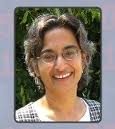
Malathi Veeraraghavan is a Professor in the Charles L. Brown Department of Electrical & Computer Engineering at the University of Virginia. Dr. Veeraraghavan received her BTech degree from Indian Institute of Technology (Madras) in 1984, and MS and PhD degrees from Duke University in 1985 and 1988, respectively. After a ten-year career at Bell Laboratories, she served on the faculty at Polytechnic University, Brooklyn, New York from 1999-2002. Her research work on optical networks is supported by NSF and DOE. She holds twenty-nine patents and has received five Best-Paper awards. She served as an Associate Editor for IEEE/ACM Transactions on Networking from 2006-2008, and as Technical Program Chair for IEEE ICC2002. Her research interests include connection-oriented networking, airborne networks, wireless MAC protocols, bandwidth sharing techniques, internetworking architectures, and Protocols.
Panelists:
Guohui Wang, Facebook

Guohui Wang works at Facebook on its backend network infrastructure. His research interests are on networked system design and performance analysis, more specifically on new network architecture, network virtualization and management in cloud data centers. His recent research is focused on hybrid packet/circuit switched data center networking, and software defined networking platform for cloud network services and big data workloads. Before joining Facebook, Guohui was a Research Staff Member in IBM T.J. Watson Research Center. He received IBM Research Eminence and Excellence Award 2012 for his contributions on software defined cloud network services. He graduated from Rice University in 2011 with a Ph.D. degree in computer science.
Sudipta Sengupta, Microsoft Research
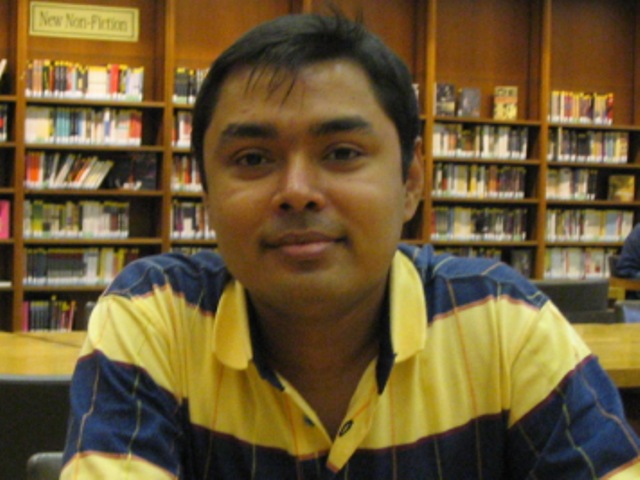
Dr. Sudipta Sengupta is currently at Microsoft Research, where he is working on data center systems and networking for cloud computing, non-volatile memory for cloud/server applications, data deduplication, storage virtualization, and peer-to-peer systems. His work on oblivious routing of network traffic has been awarded the IEEE Communications Society William R. Bennett Prize for 2011 and the IEEE Communications Society Leonard G. Abraham Prize for 2008. At Microsoft, Dr. Sengupta has applied traffic oblivious routing ideas to design a low-cost, flexible, and agile next generation data center network using commodity switches. The ideas in VL2 have been deployed in Bing and Azure properties across Microsoft's cloud data centers. The paper has been recognized by ACM as one of "the most important research results published in CS in recent years" and appeared as an invited paper in the Research Highlights section of the newly re-formatted Communications of the ACM (CACM). Dr. Sengupta is working on non-volatile memory technologies for speeding up cloud/data center/server applications that can exploit the sweet spot between cost and performance. At Microsoft Research, he has built the world's first flash-assisted storage deduplication system, ChunkStash, that uses a specialized chunk hash index on flash to speed up duplicate data detection. He has partnered with the Windows Server team at Microsoft to design and build the new primary data deduplication feature that will ship in Windows Server 2012.
Paulie Germano, Google Research
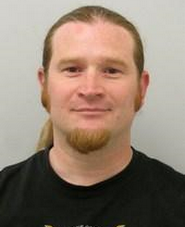
Paul Germano has spent the last 15 years immersed in the telecommunications and data communications industries. His experience spans network operations, engineering and architecture as well as protocol design and testing for ISPs, access and content providers and equipment vendors. During his tenure at Google he has focused on the design and integration of novel network and protocol architectures that massively and cost-effectively scale machine network interconnect within and between data centers.
Krishna Kant, George Mason University and NSF
Krishna Kant is currently a research professor at Center for Secure Information Systems at George Mason University. He is also serving as a program director in the CISE/CNS division of the National Science Foundation (NSF) where he runs the computer systems research (CSR) program and is also intimately involved in driving the NSF wide SEES (science, engineering and education for sustainability) initiative. His current areas of research include sustainability and energy issues in data centers, robustness in the Internet, and cloud computing security. From 1997 until 2008 he was with Intel corporation, working primarily in a variety of server technologies. From 1991 to 1997, he was with Telcordia Technologies (formerly Bellcore) and worked on SS7 signaling and congestion control. Prior to 1991, he was an Associate Professor of Computer Science at Penn State University. He is the author of the graduate text book Introduction to Computer System Performance Modeling, McGraw Hill 1992. He received his Ph.D. degree in Computer Science from University of Texas at Dallas in 1981.
Room: Independence B
Thursday, August 1st
8:50 - 10:15
Keynote II
Title: Locating Mobile Devices Indoors: Opportunities, Theory, and Practice
Speaker: Jack Brassil, Hewlett-Packard Laboratories, USA

Room: Independence B
Abstract:The Global Positioning System (GPS) revolutionized navigation, and
the introduction of GPS receivers in mobile phones pushed
that revolution into our hands. But many of us spend up to
90% of our time indoors, often out of reach of satellite
and macrocell signals. Despite the great utility and promise of
context-aware, site-specific services and decades of research on
localization technologies few indoor positioning systems
are deployed today, even in heavily populated public
spaces.
I argue that the confluence of several technologies (e.g.,
smartphones, sensors, small cells) suggest that
indoor positioning system deployments will now accelerate
quickly. I will share our observations in developing indoor
localization systems using enterprise Radio Access
Networks, and discuss the challenges both researchers
and practitioners face as conventional
enterprise data networks are re-cast to embrace Bring Your Own
Devices (BYOD) and the increased presence of mobile network operators.
Speaker info: Jack Brassil received the B.S. degree from the Polytechnic Institute of New York in 1981, the M.Eng. degree from Cornell University in 1982, and the Ph.D. degree from the University of California, San Diego, in 1991, all in electrical engineering.
Dr. Brassil has been with Hewlett-Packard Laboratories since 1999. He currently is a Research Scientist and Program Manager in Princeton, NJ. Prior to that he managed a research team in Palo Alto, CA, investigating internet streaming media, content distribution architectures, and communication networks and protocols. He is currently focused on mobile computing systems, and particularly enjoys collaborative teaming with startups, universities and industrial research partners.
Before joining HP he held multiple research positions at Bell Laboratories in Murray Hill and Holmdel, NJ. Dr. Brassil is an IEEE Fellow, a member of the IEEE Communications Society, a member of the ACM, and a member of ACM SIGCOMM.
13:30 - 15:00
Panel II: Trends in Network Architecture
The architecture of a network defines what types of communication are possible, what security properties can be guaranteed, what performance and robustness can be achieved, etc. As we are struggling more and more with some of the shortcomings of the very successful architecture of the current Internet, proposals for alternate Internet architectures have been developed by the networking research community. This panel features experts from some of the leading research projects on future Internet architecture to discuss trends in network architecture and important aspects of the future Internet, including communication paradigms, security, robustness, economics, evolution strategies, etc. The panel aims to minimize formal presentations and maximize active discussion with the audience.
Moderator: Tilman Wolf, University of Massachusetts, Amherst, USA

Tilman Wolf is Professor of Electrical and Computer Engineering at the University of Massachusetts Amherst. He received a Diplom in informatics from the University of Stuttgart, Germany, in 1998. He also received a M.S. in computer science in 1998, a M.S. in computer engineering in 2000, and a D.Sc. in computer science in 2002, all from Washington University in St. Louis. Dr. Wolf is engaged in research and teaching in the areas of computer networks, computer architecture, and embedded systems. His research interests include Internet architecture, network routers, and embedded system security. He is currently lead principle investigator on the ChoiceNet project, one of five large NSF Future Internet Architecture (FIA) projects. He is co-author of the book "Architecture of Network Systems" and has published extensively in peer-reviewed journals and conferences. His research has been supported by grants from NSF, DARPA, and industry. He has taught numerous courses on computer networks, embedded systems, programming, and digital design. Dr. Wolf is a senior member of the IEEE and the ACM.
Panelists:
Rudra Dutta, North Carolina State University
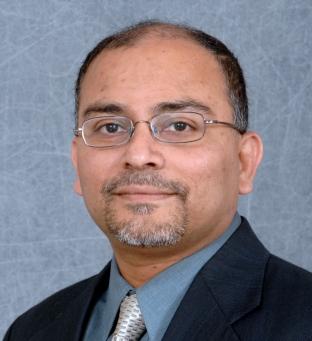
Rudra Dutta was born in Kolkata, India, in 1968. After completing elementary schooling in Kolkata, he received a B.E. in Electrical Engineering from Jadavpur University, Kolkata, India, in 1991, a M.E. in Systems Science and Automation from Indian Institute of Science, Bangalore, India in 1993, and a Ph.D. in Computer Science from North Carolina State University, Raleigh, USA, in 2001. From 1993 to 1997 he worked for IBM as a software developer and programmer in various networking related projects. He has been employed from 2001 - 2007 as Assistant Professor, from 2007 - 2013 as an Associate Professor, and since 2013 as Full Professor in the department of Computer Science at the North Carolina State University, Raleigh. During the summer of 2005, he was a visiting researcher at the IBM WebSphere Technology Institute in RTP, NC, USA. His current research interests focus on design and performance optimization of large networking systems, Internet architecture, wireless networks, and network analytics. His research is supported currently by grants from the National Science Foundation and industry, including a GENI grant and a recemt FIA grant from NSF. He has served as a reviewer for many premium journals, on NSF and DoE review panels, as part of the organizing committee of many premium conferences, including Program Co-chair for the Second International Workshop on Traffic Grooming. Most recently, he served as General Chair of IEEE ANTS 2010, and as guest editor of a special issue on Green Networking and Communications of the Elsevier Journal of Optical Switching and Networking. He is currently serving on the Steering Committee of IEEE ANTS 2013, and on the editorial board of the Elsevier Journal of Optical Switching and Networking.
Christos Papadopoulos, Colorado State University
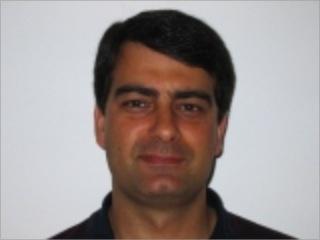
Christos Papadopoulos is currently an associate professor at Colorado State University. He received his Ph.D. in Computer Science in 1999 from Washington University in St. Louis, MO. In 2002, he received an NSF CAREER award to explore router services as a component of the next generation Internet architecture. His current interests include network architectures, security and measurements. Current projects include the DHS-funded PREDICT project, making security data available to researchers and Named Data Networks, an NSF funded project looking at future Internet architectures.
Dipankar Raychaudhuri, Rutgers University
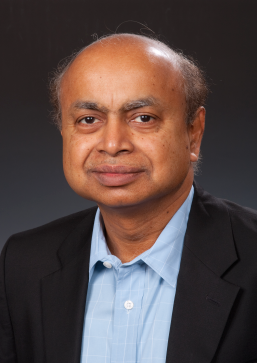
Dipankar Raychaudhuri is Professor-II, Electrical & Computer Engineering and Director, WINLAB (Wireless Information Network Lab) at Rutgers University. As WINLAB's Director, he is responsible for an internationally recognized industry-university research center specializing in wireless technology. His research group at WINLAB has been working on design and implementation of next-generation wireless networks covering a number of emerging usage scenarios such as ad hoc mesh, vehicular, cognitive radio, 4G and mobile Internet. He is the principal investigator for several multi-institutional projects supported by the US National Science Foundation (NSF) including: MobilityFirst future Internet architecture (FIA), "ORBIT" open-access wireless network testbed, and SAVANT inter-network dynamic spectrum collaboration. He also helped initiate the ongoing GENI program for deployment of a global-scale experimental infrastructure for Internet research, and is currently involved with the Open GENI Base Station project aimed at deploying programmable 4G wireless networks at several university campuses across the US. Dr. Raychaudhuri has previously held corporate R&D positions in the telecom/networking industry including: Chief Scientist, Iospan Wireless (2000-01), Assistant General Manager & Dept Head-Systems Architecture, NEC USA C&C Research Laboratories (1993-99) and Head, Broadband Communications Research, Sarnoff Corp (1990-92). He obtained his B.Tech (Hons) from the Indian Institute of Technology, Kharagpur in 1976 and the M.S. and Ph.D degrees from SUNY, Stony Brook in 1978, 79. He is a Fellow of the IEEE.
Dah Ming Chiu, The Chinese University of Hong Kong
Dah Ming Chiu is a Full Professor and the Chairman of the Department of Information Engineering, at The Chinese University of Hong Kong. His research interest includes network resource allocation, network economics, network measurement, and big data analytics. A lot of his recent publications concerns Internet content distribution systems, via P2P assisted, or CDN-based systems. He served on the editorial board of IEEE/ACM Transactions on Networking from 2006-20012, and on the TPC of many top conferences for computer networks. He is the co-chair of ACM Sigcomm 2013, which will be hosted at the Chinese University of Hong Kong, in mid August 2013.Room: Independence B
Friday, August 2nd
8:50 - 10:15
Keynote III
Title: Next Steps towards Internet-optical Service Convergence: A Network Management Perspective
Speaker: Admela Jukan, Technische Universität Carolo-Wilhelmina zu Braunschweig (Brunswick), Germany
Room: Independence B
Abstract:
Despite the steady and significant increase in Internet traffic, today’s Internet topologies are stable, reliable, and - underutilized. This is mainly due to the proven practice to overprovision Internet links, - often up to seventy percent, thus allowing for accommodation of unpredictably large packet flows, while keeping the network stable and resilient against attacks and failures. Even with major operational benefits, the practice of overprovision is known for its high capital and operational expenses. At first glance, dynamic optical circuits can address the downsides of overprovision, as they can be setup to bypass any congested or faulty IP links and they are comparably less expensive. However, the two networks -optical and Internet, have evolved as two fundamentally different and separately managed ecosystems, and cannot easily operate in harmony. In this talk, I will discuss why past approaches to deploy dynamic optical circuits have not been widely adopted for IP routing, - from the point of view of network management, and present our research ideas on how Internet can effectively use optical circuits. I will talk about the importance of new systems research and present new directions in theoretical studies in this field, including an analysis of the effects of dynamic optical circuit setup on IP routing. Finally, I will give a practical outlook from our EU Project ONE (www.ict-one.eu), focusing on network management aspects of optical networks and the Internet coordination.
Speaker info: Admela Jukan is Chair Professor of Communication Networks at the Technische Universität Carolo-Wilhelmina zu Braunschweig (Brunswick) in Germany. Prior to that post, she was research and visiting faculty at the Institut National de la Recherche Scientifique (INRS), University of Illinois at Urbana Champaign (UIUC) and Georgia Tech (GaTech). In 1999 and 2000, she was a visiting scientist at Bell Labs, Holmdel, NJ. From 2002-2004, she served as Program Director in Computer and Networks System Research at the National Science Foundation (NSF) in Arlington, VA. Dr. Jukan has chaired and co-chaired several international conferences, including IFIP ONDM, IEEE ANTS, IEEE ICC and IEEE GLOBECOM. She serves as Associate Technical Editor for IEEE Communications Magazine and IEEE Network. She is a co-Editor in Chief of the Elsevier Journal on Optical Switching and Networking (OSN). She is an elected Vice Chair of the IEEE Optical Network Technical Committee, ONTC (Chair in 2014). She is recipient of an Award of Excellence for the BMBF/CELTIC project 100Gb Ethernet and was also awarded the IBM Innovation Award (2009). She is the Coordinating Principal Investigator of the FP7 EU-Project ONE (ict-one.eu), with focus on next-generation network management systems in combined IP and optical networks. Admela Jukan received her Dr.tech. degree (cum laude) in Electrical and Computer Engineering from the Technische Universität Wien, the M.Sc. degree in Information Technologies from the Politecnico di Milano, Italy, and her Dipl. -Ing. degree from the Fakultet Elektrotehnike i Racunarstva (FER), in Zagreb, Croatia. Admela enjoys playing tennis and dog walking, and her work as a teacher has been greatly focused on helping female students and scholars from all over the world advance their career in science and technology.
13:30 - 15:00
Panel III: SDN and Network Virtualization
Moderator: Ilia Baldine, RENCI
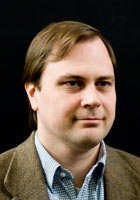
Ilia Baldine leads RENCI’s network research and infrastructure programs. He is a networking researcher with a wide range of interests, including high-speed optical network architectures, cross-layer interactions, novel signaling schemes and network security. Before coming to RENCI, Baldine was the principal scientist at the Center for Advanced Network Research at the Research Triangle Institute, and a network research engineer at the Advanced Network Research group at MCNC, where was a team member and a leader of a number of federally funded research efforts. He holds Ph.D. and MS degrees in computer science from North Carolina State University.
Panelists
Kristin Raushenbach, BBN-Raytheon
Dr. Rauschenbach is currently Executive Vice President of the Emerging Innovations, and a Principal Scientist, at Raytheon BBN Technologies. Prior to BBN, Dr. Rauschenbach was the co-founder and CEO of PhotonEx Corporation, a pioneer of 40 Gb/s optical transport technology. She was also an Associate Division Head at MIT Lincoln Laboratories. Dr. Rauschenbach has led multiple successful teams of engineers and scientists through the entire development cycle from research and development through commercial product development. Dr. Rauschenbach’s technical expertise is in the area of optical networking including wideband optical network systems and components as well as network management, control, and security. She has worked in both the government and commercial sectors in the area of data communications and telecommunications fiber optic networks. One of her current research interests is in control plane technology for optical transport SDN.
Gary Berger, Cisco

Technology strategist with 23 years experience in systems and application development currently working in Cisco's Chief Strategy Office where he focuses on distributed computing and SDN. Gary has spent a majority of his career consulting for Fortune 500 companies as well as running architecture teams at several Wall Street companies including Dow Jones & Company. Prior to joining the Chief Strategy Office he worked as a Customer Solutions Architect and as a Technical Leader for Data Center Technology Group CTO's office.
Nick Bastin
Nick Bastin is a freelance consultant working with researchers, enterprises, and hardware vendors. He has previously worked on the staff at Big Switch Networks, was the OpenFlow Engineering Manager for the Clean Slate program at Stanford University, and is an active member of the NSF GENI community. Prior to joining Stanford he spent 12 years at OPNET Technologies, working to bring modeling and network analytics to the fore as primary tools in enterprise and service provider network operations and planning, building on his experience as both a software developer and service provider operations staff.Room: Independence B